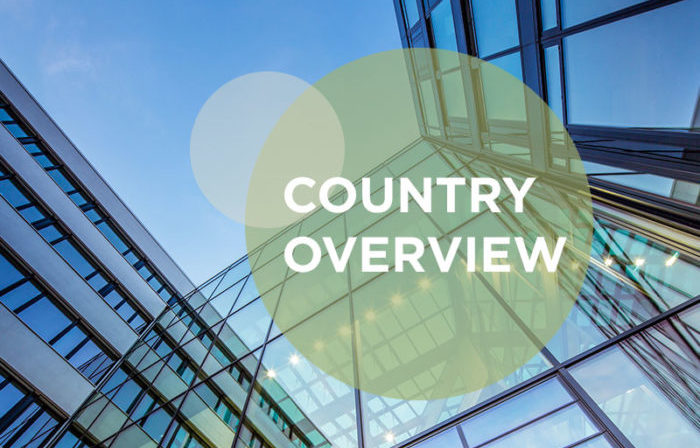

Welcome to Taxand Quick Fixes
The VAT System within the European Union is error-prone. VAT regulations which differ from one member state to another cause problems for entrepreneurs in the single market.


The VAT System within the European Union is error-prone. VAT regulations which differ from one member state to another cause problems for entrepreneurs in the single market.
Intended VAT fraud, especially carousel fraud, cost the states annually a high amount of evaded tax. Thus, a new VAT system was demanded by many sides. Since it takes a long time to develop and coordinate a completely new tax system, it was agreed to introduce four rapid measures. The following articles deal with the individual measures both at European level and with their implementation at the level of the individual member states.

Authors: Andreas Erdbrügger und Rebecca Alika Brinkmann (Taxand Germany, Flick Gocke Schaumburg)

a. VAT ID and Recapitulative Statement
b. Text of the VAT Directive
• Article 138 is amended as follows:
‘1. Member States shall exempt the supply of goods dispatched or transported to a destination outside their respective territory but within the Community, by or on behalf of the vendor or the person acquiring the goods, where the following conditions are met:
(a) the goods are supplied to another taxable person, or to a non-taxable legal person acting as such in a Member State other than that in which dispatch or transport of the goods begins;
(b) the taxable person or non-taxable legal person for whom the supply is made is identified for VAT purposes in a Member State other than that in which the dispatch or transport of the goods begins and has indicated this VAT identification number to the supplier.’;
‘1a.The exemption provided for in paragraph 1 shall not apply where the supplier has not complied with the obligation provided for in Articles 262 and 263 to submit a recapitulative statement or the recapitulative statement submitted by him does not set out the correct information concerning this supply as required under Article 264, unless the supplier can duly justify his shortcoming to the satisfaction of the competent authorities.’
• Article 262 is replaced by the following: ‘Article 262
1. Every taxable person identified for VAT purposes shall submit a recapitulative statement of the following:
(a) the acquirers identified for VAT purposes to whom he has supplied goods in accordance with the conditions specified in Article 138(1) and point (c) of Article 138(2);
(b) the persons identified for VAT purposes to whom he has supplied goods which were supplied to him by way of intra-Community acquisition of goods referred to in Article 42;
(c) the taxable persons, and the non-taxable legal persons identified for VAT purposes, to whom he has supplied services other than services that are exempted from VAT in the Member State where the transaction is taxable and for which the recipient is liable to pay the tax pursuant to Article 196.
2. In addition to the information referred to in paragraph 1, every taxable person shall submit information about the VAT identification number of the taxable persons for whom goods, dispatched or transported under call-off stock arrangements in accordance with the conditions set out in Article 17a, are intended and about any change in the submitted information.’
Authors: Andreas Erdbrügger und Rebecca Alika Brinkmann (Taxand Germany, Flick Gocke Schaumburg)
The Council Implementing Regulation (EU) 2018/1912 of 4th December 2018 is amended by a new Art. 45a. According to this provision the vendor needs to be in possession of at least two items of non-contradictory evidence referred to in point (a) of paragraph 3 which were issued by two different parties that are independent of each other, of the vendor and of the acquirer. In practice, this provision will cause problems. It is at least questionable if the supplier can provide two different documents which meet the demands of the Regulation. Nevertheless, the Regulation unfolds direct effect towards the entrepreneurs. In this regard, the VAT Committee debates the question how the term ‘independent’ is to be interpreted and how close the relationship between the entities must be.
The question arises about the relationship between the provision in Art. 45a Council Implementing Regulation and the national provisions about the proof of transport.
Please note: The supply of services needs to be distinguished from this situation. Here, the aforementioned requirements are not applicable.
a. Art.45a of the Council Implementing Regulation (EU)2018/1912 is worded as follows:
‘Art. 45a
1. For the purpose of applying the exemptions laid down in Article 138 of Directive 2006/112/EC, it shall be presumed that goods have been dispatched or transported from a Member State to a destination outside its territory but within the Community in either of the following cases:
(a) the vendor indicates that the goods have been dispatched or transported by him or by a third party on his behalf, and either the vendor is in possession of at least two items of non-contradictory evidence referred to in point (a) of paragraph 3 which were issued by two different parties that are independent of each other, of the vendor and of the acquirer, or the vendor is in possession of any single item referred to in point (a) of paragraph 3 together with any single item of non-contradictory evidence referred to in point (b) of paragraph 3 confirming the dispatch or transport which were issued by two different parties that are independent of each other, of the vendor and of the acquirer;
(b) the vendor is in possession of the following:
(i) a written statement from the acquirer, stating that the goods have been dispatched or transported by the acquirer, or by a third party on behalf of the acquirer, and identifying the Member State of destination of the goods; that written statement shall state: the date of issue; the name and address of the acquirer; the quantity and nature of the goods; the date and place of the arrival of the goods; in the case of the supply of means of transport, the identification number of the means of transport; and the identification of the individual accepting the goods on behalf of the acquirer; and
(ii) at least two items of non-contradictory evidence referred to in point (a) of paragraph 3 that were issued by two different parties that are independent of each other, of the vendor and of the acquirer, or any single item referred to in point (a) of paragraph 3 together with any single item of non- contradictory evidence referred to in point (b) of paragraph 3 confirming the dispatch or transport which were issued by two different parties that are independent of each other, of the vendor and of
the acquirer.
The acquirer shall furnish the vendor with the written statement referred to in point (b)(i) by the tenth day of the month following the supply.
2. A tax authority may rebut a presumption that has been made under paragraph 1.
3. For the purposes of paragraph 1, the following shall be accepted as evidence of dispatch or transport:
(a) documents relating to the dispatch or transport of the goods, such as a signed CMR document or note, a bill of lading, an airfreight invoice or an invoice from the carrier of the goods;
(b) the following documents:
(i) an insurance policy with regard to the dispatch or transport of the goods, or bank documents proving payment for the dispatch or transport of the goods;
(ii) official documents issued by a public authority, such as a notary, confirming the arrival of the goods in the Member State of destination;
(iii) a receipt issued by a warehouse keeper in the Member State of destination, confirming the storage of the goods in that Member State.’
Authors: Andreas Erdbrügger und Rebecca Alika Brinkmann (Taxand Germany, Flick Gocke Schaumburg)
a. Background for amending VAT Directive
According to several decisions of the CJEU, chain transactions refer to successive supplies of goods which are subject to a single intra-Community transport. The intra- community movement of the goods should only be ascribed to one of the supplies, and only that supply should benefit from the VAT exemption provided for the intra- Community supplies. The other supplies in the chain should be taxed as local supplies and could require the VAT identification of the supplier in the Member State of supply. However, as there are no further rules (neither in the VAT directive nor in the implementing regulation) how to apply the interpretation of ECJ in a uniform manner and in order to avoid different approaches amongst Member States, which may lead to double taxation or non-taxation, and in order to enhance legal certainty for operators, a common rule should be established that, provided certain conditions are met, the transport of the goods should be clearly attributed to one supply within the chain.
b. Relevant iC decisions on chain transactions
CJEU 06.04.2006,
EMAG Handel Eder (C-245/04)
CJEU 16.12.2010,
Euro Tyre Holding (C-430/09)
CJEU 27.09.2012,
VSTR (C-587/10)
CJEU 26.07.2017,
Toridas (C-386/16)
CJEU 21.02.2018,
Kreuzmayr GmbH (C-628/16)
CJEU 19.04.2018,
Hans Bühler KG (C-580/16)
CJEU 19.12.2018,
AREX CZ a.s. (C-414/17)
c. Directive text
Article 36a is inserted in the VAT Directive
‘Art. 36a
1. Where the same goods are supplied successively, and those goods are dispatched or transported from one Member State to another Member State directly from the first supplier to the last customer in the chain, the dispatch or transport shall be ascribed only to the supply made to the intermediary operator.
2. By way of derogation from paragraph 1, the dispatch or transport shall be ascribed only to the supply of goods by the intermediary operator where the intermediary operator has communicated to his supplier the VAT identification number issued to him by the Member State from which the goods are dispatched or transported.
3. For the purposes of this Article, ‘intermediary operator’ means a supplier within the chain other than the first supplier in the chain who dispatches or transports the goods either himself or through a third party acting on his behalf.
4. This Article shall not apply to the situations covered by Article 14a.’
Author: Hannes Gurtner (Taxand Austria, LeitnerLeitner)
a. Topic overview
By “call-off stock” we refer to situations in which a supplier transports goods to another Member State for their supply at a later stage. At the moment the transport takes place, the supplier already knows the identity of the person that will be acquiring the goods. Transfer of title, however, does not take place at that moment of the transport but at a later stage (when the customer needs the goods for its production processes, for instance).
This currently gives rise to the supplier carrying out a deemed supply (in the Member State of departure of the goods) and a deemed intra-Community acquisition (in the Member State of arrival of the goods), followed by a ‘domestic’ supply in the Member State of arrival when transfer of title occurs, and requires him to be identified for VAT purposes in that Member State.
Despite of that, several Member States introduced simplifications to the above treatment thus considering, in some cases, that there was a direct intra-EU supply at the moment of dispatch of the goods. In other cases, the intra-EU supply was considered to take place at the moment of transfer of title to the goods – disregarding the intra-EU transfer – though this might be subject to time limits, etc.
Thus, it has been considered necessary to harmonize the applicable rules to this type of supplies, as follows:
b. Conditions for call-off stock arrangements to benefit from the new rules.
The call-off stock arrangements that will benefit from the new simplified rules applicable as of January 1, 2020 need to meet all the following conditions:
(a) goods are dispatched or transported by a taxable person, or by a third party on his behalf, to another Member State with a view to those goods being supplied there, at a later stage and after arrival, to another taxable person who is entitled to take ownership of those goods in accordance with an existing agreement between both taxable persons;
(b) the taxable person dispatching or transporting the goods has not established his business nor has a fixed establishment in the Member State to which the goods are dispatched or transported;
(c) the taxable person to whom the goods are intended to be supplied is identified for VAT purposes in the Member State to which the goods are dispatched or transported and both his identity and the VAT identification number assigned to him by that Member State are known to the taxable person referred to in point (b) at the time when the dispatch or transport begins;
(d) the taxable person dispatching or transporting the goods records the transfer of the goods in the register provided for in Article 243(3) and includes the identity of the taxable person acquiring the goods and the VAT identification number assigned to him by the Member State to which the goods are dispatched or transported in the recapitulative statement provided for in Article 262(2)
c. Applicable rules
In the above cases, an intra-EU supply of goods in accordance with Article 138(1) shall be deemed to be made by the taxable person that dispatched or transported the goods and an intra- Community acquisition of goods shall be deemed to be made by the taxable person to whom those goods are supplied in the Member State to which the goods were dispatched or
transported. Both taxable events take place at the moment of transfer of title to the goods, provided that such transfer of title occurs within 12 months after the arrival of the goods in the Member State to which they were dispatched or transported.
If the time limit is exceeded, a transfer of own goods within the meaning of Article 17 of the Directive will be deemed to take place on the day following the expiry of the 12-month period.
This transfer of own goods will also be deemed to occur in case any of the conditions for the call- off stock arrangements to benefit from the simplified rules ceases to be met (and from that very same moment); if the goods are sent to another EU MS, in which case the transfer of own goods is deemed to occur immediately after the transport to the “new” MS takes place, or in the event of the destruction, loss or theft of the goods, in which case, the transfer of own goods will be deemed to occur on the date that the goods were actually removed or destroyed, or, if it is impossible to determine that date, the date on which the goods were found to be destroyed or missing.
However, the simplification is not lost in case the goods are dispatched back to the MS of origin (before the mentioned 12-month period) and such return of goods is posted in the register under art 243(3) of the Directive.
In case the original acquirer of the goods is substituted by another taxable person, no transfer of goods shall be deemed to take place at the time of the substitution either, provided that all other applicable conditions are met and the substitution is recorded by the supplier in the register provided for in Article 243(3).
Author: Carlos Gómez Barrero (Taxand Spain, Garrigues)

Authors: Pär Sundberg, Johan Bengtsson and Johanna Carlsson (Taxand Sweden, Skeppsbron Skatt)